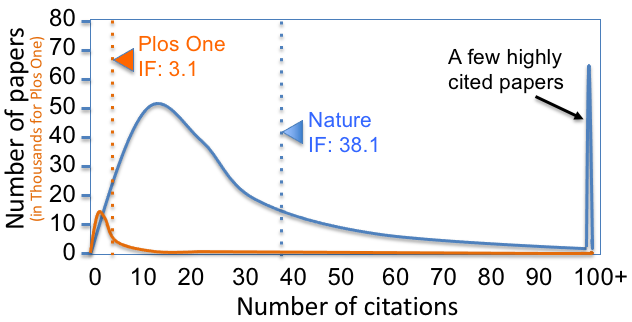|
Neurophotonics (journal)
''Neurophotonics'' is a quarterly, peer-reviewed scientific journal covering optical technology applicable to study of the brain and their impact on basic and clinical neuroscience applications, published by SPIE. The editor-in-chief is Anna Devor (Boston University, USA). Abstracting and indexing The journal is abstracted and indexed in: * PubMed * PubMed Central * Science Citation Index Expanded * Inspec * Scopus * Embase * Ei/Compendex According to the ''Journal Citation Reports'', the journal has a 2020 impact factor The impact factor (IF) or journal impact factor (JIF) of an academic journal is a scientometric index calculated by Clarivate that reflects the yearly mean number of citations of articles published in the last two years in a given journal, as ... of 3.593. References External links * Optics journals SPIE academic journals English-language journals Publications established in 2014 {{neuroscience-journal-stub ... [...More Info...] [...Related Items...] OR: [Wikipedia] [Google] [Baidu] |
Photonics
Photonics is a branch of optics that involves the application of generation, detection, and manipulation of light in form of photons through emission, transmission, modulation, signal processing, switching, amplification, and sensing. Though covering all light's technical applications over the whole spectrum, most photonic applications are in the range of visible and near-infrared light. The term photonics developed as an outgrowth of the first practical semiconductor light emitters invented in the early 1960s and optical fibers developed in the 1970s. History The word 'Photonics' is derived from the Greek word "phos" meaning light (which has genitive case "photos" and in compound words the root "photo-" is used); it appeared in the late 1960s to describe a research field whose goal was to use light to perform functions that traditionally fell within the typical domain of electronics, such as telecommunications, information processing, etc. Photonics as a field began with th ... [...More Info...] [...Related Items...] OR: [Wikipedia] [Google] [Baidu] |
SPIE Academic Journals
SPIE (formerly the Society of Photographic Instrumentation Engineers, later the Society of Photo-Optical Instrumentation Engineers) is an international not-for-profit professional society for optics and photonics technology, founded in 1955. It organizes technical conferences, trade exhibitions, and continuing education programs for researchers and developers in the light-based fields of physics, including: optics, photonics, and imaging engineering. The society publishes peer-reviewed scientific journals, conference proceedings, monographs, tutorial texts, field guides, and reference volumes in print and online. SPIE is especially well-known for Photonics West, one of the laser and photonics industry's largest combined conferences and tradeshows which is held annually in San Francisco. SPIE also participates as partners in leading educational initiatives, and in 2020, for example, provided more than $5.8 million in support of optics education and outreach programs around the ... [...More Info...] [...Related Items...] OR: [Wikipedia] [Google] [Baidu] |
Optics Journals
Optics is the branch of physics that studies the behaviour and properties of light, including its interactions with matter In classical physics and general chemistry, matter is any substance that has mass and takes up space by having volume. All everyday objects that can be touched are ultimately composed of atoms, which are made up of interacting subatomic par ... and the construction of optical instruments, instruments that use or Photodetector, detect it. Optics usually describes the behaviour of visible light, visible, ultraviolet, and infrared light. Because light is an electromagnetic wave, other forms of electromagnetic radiation such as X-rays, microwaves, and radio waves exhibit similar properties. Most optical phenomena can be accounted for by using the Classical electromagnetism, classical electromagnetic description of light. Complete electromagnetic descriptions of light are, however, often difficult to apply in practice. Practical optics is usually done us ... [...More Info...] [...Related Items...] OR: [Wikipedia] [Google] [Baidu] |
Clarivate Analytics
Clarivate Plc is a British-American publicly traded analytics company that operates a collection of subscription-based services, in the areas of bibliometrics and scientometrics; business / market intelligence, and competitive profiling for pharmacy and biotech, patents, and regulatory compliance; trademark protection, and domain and brand protection. In the academy and the scientific community, Clarivate is known for being the company which calculates the impact factor, using data from its Web of Science product family, that also includes services/applications such as Publons, EndNote, EndNote Click, and ScholarOne. Its other product families are Cortellis, DRG, CPA Global, Derwent, MarkMonitor, CompuMark, and Darts-ip, and also the various ProQuest products and services. Clarivate was formed in 2016, following the acquisition of Thomson Reuters' Intellectual Property and Science Business by Onex Corporation and Baring Private Equity Asia. Clarivate has been g ... [...More Info...] [...Related Items...] OR: [Wikipedia] [Google] [Baidu] |
Impact Factor
The impact factor (IF) or journal impact factor (JIF) of an academic journal is a scientometric index calculated by Clarivate that reflects the yearly mean number of citations of articles published in the last two years in a given journal, as indexed by Clarivate's Web of Science. As a journal-level metric, it is frequently used as a proxy for the relative importance of a journal within its field; journals with higher impact factor values are given the status of being more important, or carry more prestige in their respective fields, than those with lower values. While frequently used by universities and funding bodies to decide on promotion and research proposals, it has come under attack for distorting good scientific practices. History The impact factor was devised by Eugene Garfield, the founder of the Institute for Scientific Information (ISI) in Philadelphia. Impact factors began to be calculated yearly starting from 1975 for journals listed in the ''Journal Citatio ... [...More Info...] [...Related Items...] OR: [Wikipedia] [Google] [Baidu] |
Journal Citation Reports ''Journal Citation Reports'' ( |



